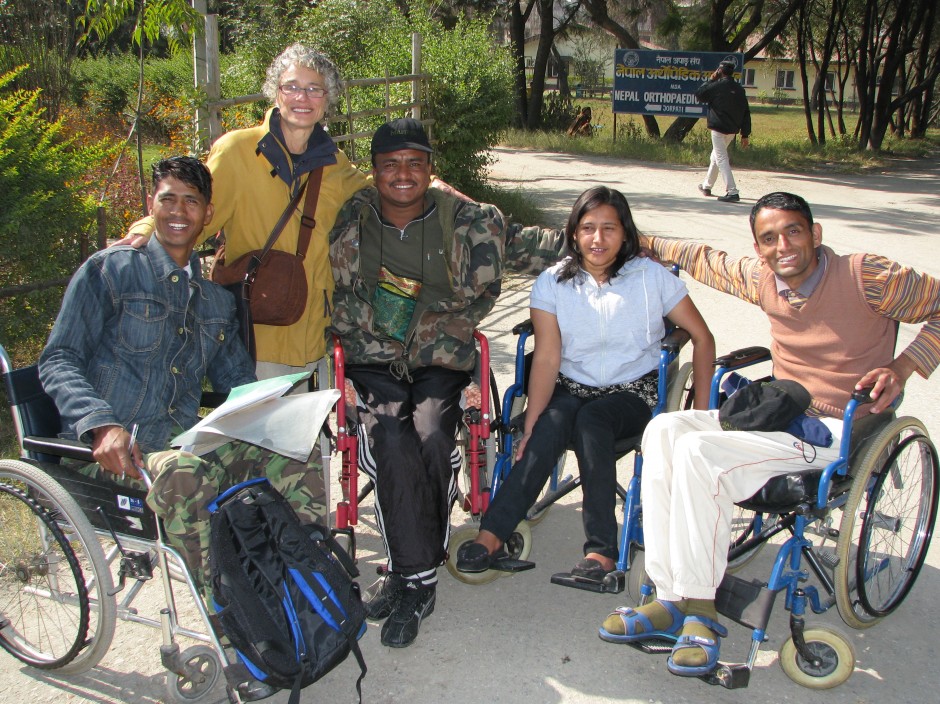SpiNepal has completed its fifteenth year
We want to tell you about our exciting project in Nepal, where spinal injury can spell disaster in the absence of the supports that we take for granted. Pain, poverty and despair can be relentless companions of spinal cord-injured Nepalese.
But, with your financial help, we are working to alleviate their pain and turn their despair and poverty into hope and productivity.
We (Drs. Peter Wing and Claire Weeks) are retired physicians who specialized, during our careers, in the surgical and rehabilitation treatment of spinal cord injuries. On a 2009 visit to Nepal, we witnessed the crushing obstacles faced by spinal cord patients and their caregivers, and decided to help. On our return to Canada we established a charitable group within the University of British Columbia (UBC) Department of Orthopaedics, an affiliation for which we are most grateful. We are known as the Nepalese Spinal Cord Injury Collaboration or Spine Nepal (SpiNepal).
We have been working closely with colleagues at the Spinal Injury Rehabilitation Centre (SIRC) near Kathmandu, Nepal’s first and only specialized spinal injury unit. Our main focus is to participate in training doctors in the care of spinal cord injury. We went to Nepal almost every year from 2009 until the COVID pandemic, all self-funded. As our objectives and commitments have grown, we have received generous help with major components of the project. We invite you to join us in this endeavour. (More details about us here and about SIRC here )
The impact of disability in Nepal
People with spinal cord injury (SCI) in Nepal have a much reduced life expectancy and, if they survive, SCI impacts every aspect of their lives.
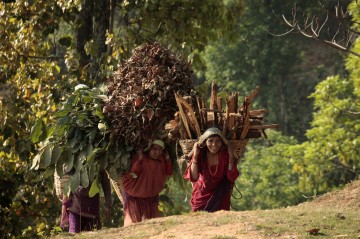
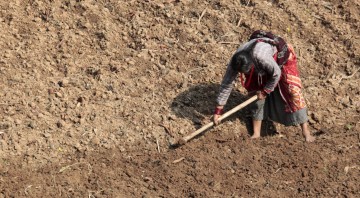
Ninety percent of Nepal’s population of about 30 million live in a rural environment several days’ walk from the nearest town. Most are subsistence farmers who toil from dawn to dark to earn a meagre existence.
People generally transport cargo on their backs in baskets or on frames suspended from wide fabric forehead straps. Enormous burdens of firewood, rocks and stones, building supplies, and fodder for animals are constantly on the move. The effort required to plant and harvest crops on thin strips of terraced fields on steep hillsides is staggering. This type of work is simply not possible from a wheelchair.
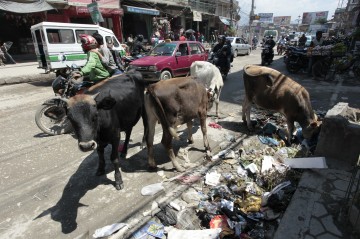
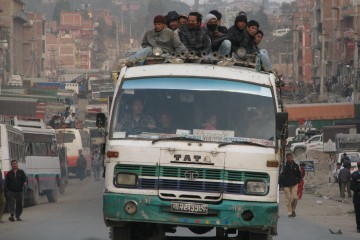
Transportation is slow and difficult even for able-bodied people. Buses have high floors with several steps up to the interior and are often overloaded with seating only on top of the bus. Small taxis are also impossible for people in chairs. The roads are rutted and pockmarked with potholes, usually full of garbage and without standard kerbs to make access to shops easy. There are no kerb cuts. Imagine trying to negotiate a wheelchair across a road, or trying to use public transportation to get to work, go to school, or visit your family.
Our purpose is: to participate with SIRC and other Nepalese colleagues and international partners in the ongoing development of a sustainable SCI system of care in Nepal, that will result in a reduced incidence of SCI and an improved quality of life for those with SCI.


